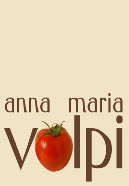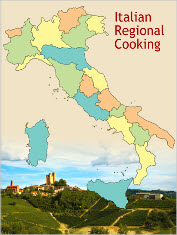


JOIN NOW
our Italian Cooking
Newsletter
our Italian Cooking
Newsletter





Publication or use of pictures, recipes, articles, or any other material form my Web site, on or off-line without written permission from the author is prohibited. If you would like to use my articles on your Web site or in your publication, contact me for details. Avoid infringing copyright law and its consequences: read the article 7 Online Copyright Myths by Judith Kallos
Read our
DISCLAIMER and
PRIVACY POLICY
before using
our site
-------------------
Linking Policy
Advertise with us
DISCLAIMER and
PRIVACY POLICY
before using
our site
-
Advertise with us
Copyright © 2003 - 2011 Anna Maria Volpi - All Rights reserved.
Anna Maria's Open Kitchen Site Map
site map
recipes
policies
about us
Some More Hot Topics You'd Like to See adv.

The Land of City States
THE CUISINE OF NORTHERN ITALY
THE CUISINE OF NORTHERN ITALY
A widespread increase in population occurred, boosting agricultural production, artisan manufacture, commerce in fairs and markets, and creating important new harbors such as Venice and Genoa.
A new political entity was being created: the Italian Comuni (The City States). The towns of northern and central Italy organized themselves into autonomous city republics, while the empire and the church had too little power to oppose them.
A new political entity was being created: the Italian Comuni (The City States). The towns of northern and central Italy organized themselves into autonomous city republics, while the empire and the church had too little power to oppose them.
The fortune of Italian cities remained unchanged until the fall of Constantinople to the Ottoman Empire and the discovery of America. By then, the interests of world commerce had moved from the Mediterranean to the Atlantic. While in France, England, Germany, and Spain large nations were being created, Italy remained subdivided into many small political and territorial entities. The strategic importance of Italy diminished. The Italian cities could not compete with the larger states and soon became lands of conquest for foreign powers, which would maintain control in different parts of Italy until unification in 1862.
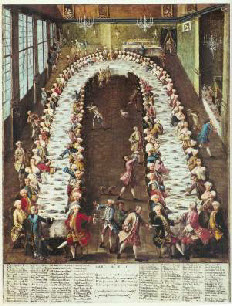
Banquet in the Giudecca, Venice 1755.
Later, most of the towns coalesced into larger signorie (princedoms) that would acquire enormous power and wealth. In the sixteenth and seventeenth centuries, Venice, Verona, Genoa, Florence, Pisa, and Milan all became extremely rich through commerce with the Islamic world as well as trade between the Italian territories and northern Europe.
The wealth of the Italian signori of the Renaissance is legendary. Many books written during the sixteenth and seventeenth centuries tell about the cooking in the courts of the nobility. Among the most famous are Opera […], by Bartolomeo Scappi (Venice, 1570), who was the cook for Pope Pius V in Rome; Banchetti […], by Cristoforo Messibugo (Ferrara, 1549), the cook for the Duke of Este. All of them have hundreds of recipes and describe the magnificence of the banquets.
The wealth of the Italian signori of the Renaissance is legendary. Many books written during the sixteenth and seventeenth centuries tell about the cooking in the courts of the nobility. Among the most famous are Opera […], by Bartolomeo Scappi (Venice, 1570), who was the cook for Pope Pius V in Rome; Banchetti […], by Cristoforo Messibugo (Ferrara, 1549), the cook for the Duke of Este. All of them have hundreds of recipes and describe the magnificence of the banquets.
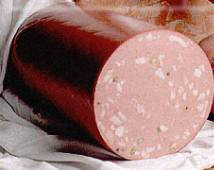
In spite of the long coastline, the cuisine of the north has fewer fish dishes than one would expect. The Mediterranean Sea is generally not as abundant in fish as the Atlantic. In addition, fish was difficult to deliver and never reached the regions in the interior, where fresh water or lake fish are moderately present.
Even under foreign influence, Italian cities never lost their identity. The mark left by the latest foreign occupations was either limited or fully integrated into local culinary traditions. At the same time, many unique food ingredients and original cooking techniques were developed and preserved in northern Italy, and they remain very popular all over the world today. A few examples include red radicchio from Treviso, balsamic vinegar from Modena, Parmigiano Reggiano from the Emilia region, prosciutto from Friuli, pesto from Liguria, tortellini from Bologna, and the list goes.
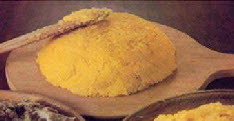
Every region developed particular qualities depending on its history and geographic location. The lands along the alpine arch all extend in part over the mountains and in part into the Po valley. Two main staples dominate in these areas. In the plain, rice dominates in the form of risotto, and everywhere else, maize dominates in the form of polenta.
Polenta
Mortadella
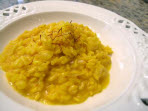
Risotto
In contrast, the cuisine of Venice is rich in mollusks, crustaceans, sardines, and other fish present in the lagoon. The Liguria region is famous for its cioppino, a fish stew that was transplanted to San Francisco by Genoese fishermen at the beginning of the last century. In this environment, baccala’ (salt cod) or stockfish (dried cod), which are always available, became two of the main components of the local cuisine, and many sophisticated recipes in the Veneto region include one of them as an ingredient.
This contrasts with the geography of the Emilia and Romagna areas, south of the Po River. The fertility of the land, the farming and abundance of wheat, as well as the pork breeding, made Bologna the culinary capital of Italy. Nicknamed La Grassa (the fat), this city is celebrated for its many fresh-pasta dishes. These dishes are common in all of northern Italy, but are particularly sophisticated and refined in Bologna.
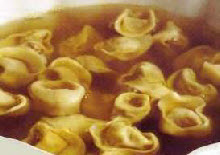
Tortellini
To understand the cuisine of Northern Italy, we have to go back in history. With the defeat of the Roman armies, the barbarians were able to swarm through Italian territory almost without resistance. The cities were sacked, and the survivors took refuge in the most remote areas of the countryside.
Inhabitants of northern Italy fleeing the Lombard invasion around 570 AD found shelter on the islands along the delta of the Po River. There, the city of Venice was founded, protected by the lagoons in the north Adriatic Sea. After 1000 AD, with the end of the barbaric invasions, the people of Italy began returning to the cities.

